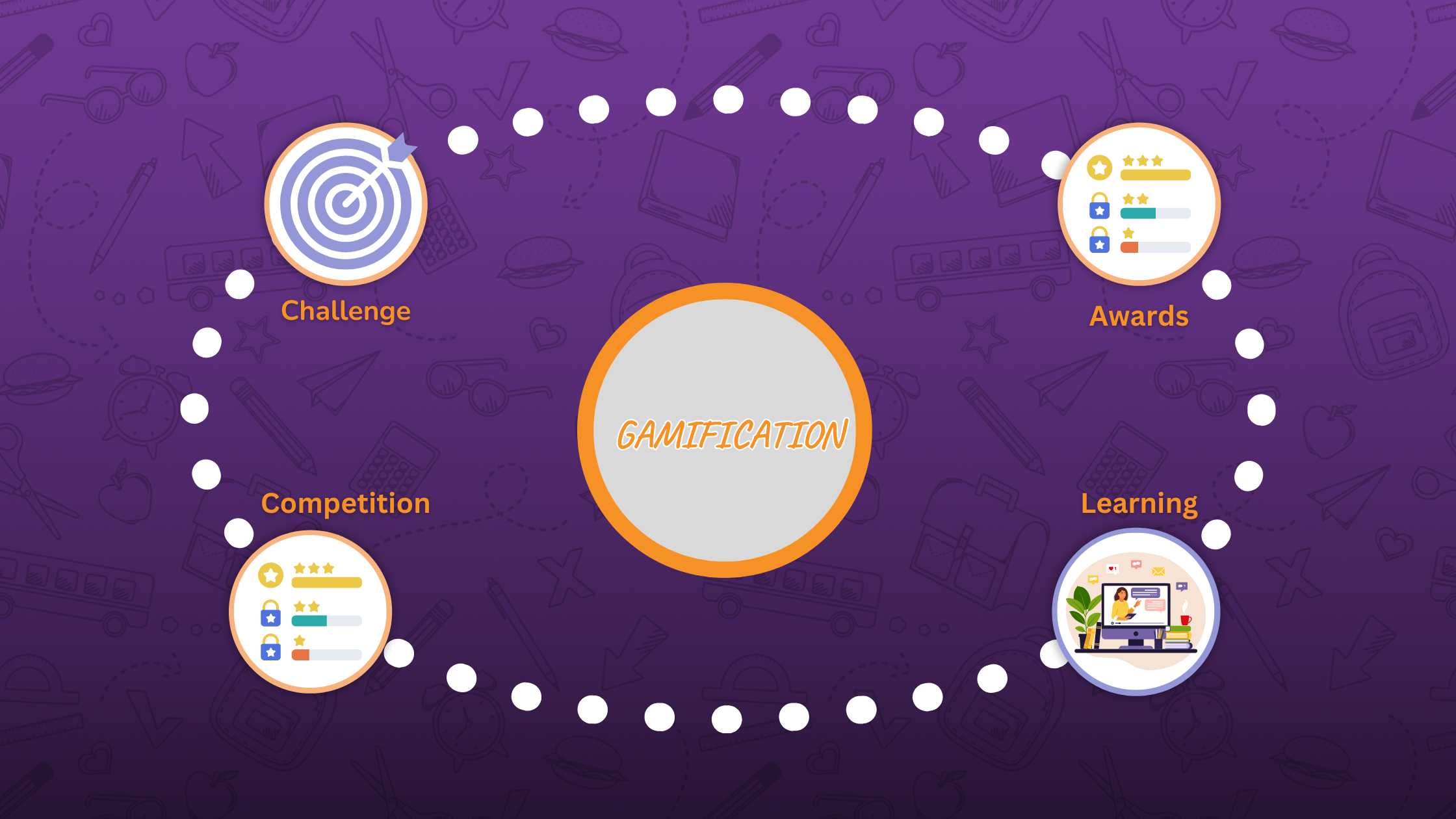The education landscape is constantly evolving, and educators are continuously seeking innovative ways to engage students and enhance their learning experience. The strategic use of game elements in non-game contexts, known as gamification in education, is rapidly gaining traction in the 21st-century classroom, offering a compelling solution to boost student motivation, improve knowledge retention, and create a more interactive learning environment. In this blog post, we will explore how educators can integrate gamification in education, and how Kinetic Education is leading the way in this innovative approach.
What is Gamification?
Gamification applies the principles of game design to non-game settings. It doesn't involve turning every lesson into a full-blown video game but rather incorporating specific elements like points, badges, leaderboards, challenges, and rewards to make learning more engaging and enjoyable.
What is an example of gamification in the classroom?
Imagine this: Instead of simply memorizing a list of historical dates, students are tasked with completing a "time travel" mission. They earn points and badges by correctly answering questions and completing activities, unlocking new levels, and eventually "traveling" to different historical periods. This scenario exemplifies how gamification can transform passive learning into an active, goal-oriented experience.
A Glimpse into Gamified Classrooms:
Now, let's delve into a practical example. A math teacher might utilize a point system where students earn points for completing assignments, participating actively in class, and helping their peers. These points could then be translated into virtual rewards, like unlocking new levels in an educational math game or customizing their online learning avatars. Leaderboards displayed in the classroom can further fuel friendly competition and motivate students to strive for excellence.
The 4 Phases of Adding Gamification to the Classroom
1. Assessment: Begin by assessing the learning objectives and identifying areas where gamification can enhance the educational experience.
2. Design: Develop a game structure tailored to the subject matter and the needs of the students, incorporating elements such as points, levels, and rewards.
3. Implementation: Integrate gamified elements seamlessly into the curriculum, ensuring alignment with educational goals and providing adequate support for students.
4. Evaluation: Continuously assess the effectiveness of gamification through feedback mechanisms and analytics, refining the approach based on insights gathered.
3 Ways Educators Can Add Gamification to Learning
1. Quest-Based Learning:
Quest-Based Learning emerges as a captivating approach to integrating gamification in education. It involves designing immersive quests that challenge students to overcome obstacles, solve puzzles, and achieve specific learning objectives. With the quest-based gamification method, educators can create engaging learning journeys that mirror the excitement of gaming adventures.
Through quest-based learning, students not only acquire knowledge but also develop essential 21st-century skills such as collaboration, critical thinking, and problem-solving. This approach fosters a sense of accomplishment as students progress through levels, earn rewards, and compete on leaderboards, promoting healthy competition and driving continuous improvement.
2. Simulation Games:
Simulation Games represent another innovative avenue for educators to leverage gamification in education. By immersing students in realistic scenarios that mirror professional environments or real-world challenges, simulation games provide a hands-on platform for applying theoretical concepts to practical situations.
This interactive approach not only enhances student engagement but also cultivates skills like decision-making, adaptability, and creativity. Through simulation games, students can experience the consequences of their actions in a safe environment, fostering experiential learning and deepening their understanding of complex concepts.
3. Leaderboards and Challenges:
Leaderboards and Challenges serve as effective tools for instilling motivation and accountability in students through gamification. Leaderboards track student progress and achievements, fostering healthy competition and recognizing individual successes. Challenges provide opportunities for students to test their skills and strive for excellence in a supportive environment, promoting engagement and collaboration. Implementing these elements encourages students to excel while tracking their progress and fostering collaboration.
How Kinetic is Activating Future Entrepreneurs with Gamified Learning
At Kinetic, we are passionate about empowering young minds to become the next generation of entrepreneurs. We believe in the transformative power of gamification and incorporate various elements into our platform to make learning engaging and enjoyable. Through interactive challenges, badges, and progress tracking, we strive to:
Spark curiosity and ignite a passion for entrepreneurship: The kinetic platform uses gamification to introduce complex concepts in a fun and accessible way, fostering a love for learning and exploration.
Promote critical thinking and problem-solving skills: Gamified learning activities encourage students to think creatively, analyze challenges, and develop effective solutions, preparing them for real-world scenarios.
Cultivate a growth mindset: Gamification allows students to see learning as a journey with continuous improvement. They learn from mistakes, celebrate achievements, and persevere through challenges, fostering a valuable growth mindset.
Education and Gamification in the 21st Century
In today's fast-paced digital age, education must evolve to meet the needs of 21st-century learners. Gamification has proven to be an effective strategy for enhancing engagement and motivation in education. Gamification offers a transformative solution, bridging the gap between traditional pedagogy and the dynamic, interactive experiences that today's youth crave. By embracing this innovative approach, educators can create dynamic learning environments that inspire and engage students, fostering their full potential. At Kinetic, we recognize the immense potential of gamification in nurturing the entrepreneurial spirit and empowering students to unlock their full potential
Join the gamification revolution and unlock your students' potential with Kinetic Education. Visit our website to book a demo or start a free trial today and discover how we are transforming education for the 21st century.

Wangechi Mwangi
Join our mailing list!
Sign up to receive updates, news, events and opportunities in the school ecosystem
